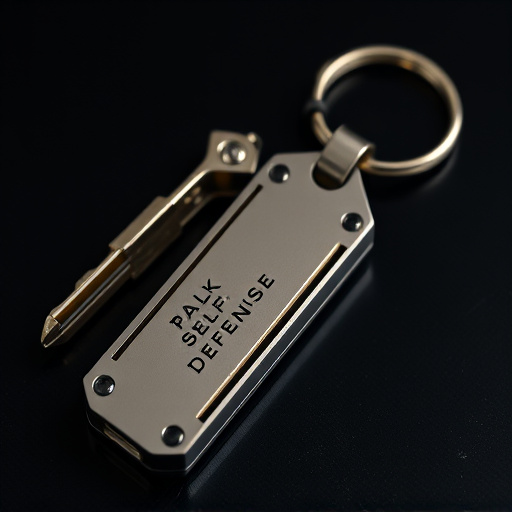Keychain self-defense devices vary globally in legality, requiring compliance with safety guidelines on sharpness, size, and potential harm. The strongest materials like high-grade steels and advanced composites are preferred for durability but must meet these standards. Consumer protection and adherence to regulations ensure the safest keychain options, balancing strength with accident prevention. Global regulations restrict material properties and designs to mitigate legal issues and promote responsible use of self-defense keychains.
With personal safety at the forefront, exploring keychain self-defense devices has become a trending topic. As these compact tools gain popularity, understanding their legal landscape is crucial. This article delves into the intricacies of keychain safety device regulations, focusing on materials, compliance standards, and unique defense considerations. Uncover insights on the strongest self-defense keychain material and navigate the regulatory framework to ensure consumer safety.
- Legal Framework for Keychain Self-Defense Devices
- Strength and Durability of Common Keychain Materials
- Compliance Standards for Consumer Safety
- Regulatory Considerations for Unique Defense Keychains
Legal Framework for Keychain Self-Defense Devices
The legal framework surrounding keychain self-defense devices varies across jurisdictions, but many countries and regions have specific regulations in place to ensure safety and responsible use. When considering the strongest self-defense keychain material, it’s not just about the hardware; understanding local laws is paramount. Materials like high-quality steel or advanced composites are often preferred for their durability and reliability, but these must comply with guidelines on sharpness, size, and potential harm to prevent accidental injuries.
In many places, there are restrictions on the type of self-defense tools that can be carried publicly, especially those that could cause significant harm. This includes regulations on keychain knives or sharp objects designed for protection. Manufacturers and users must adhere to these legal requirements, ensuring that their products meet safety standards and are used appropriately. Staying informed about local legislation is crucial for both personal security and avoiding legal consequences.
Strength and Durability of Common Keychain Materials
When considering a keychain safety device, it’s paramount to look beyond aesthetics and think about functionality and safety. The strength and durability of materials used can significantly impact its effectiveness in self-defense scenarios. Common materials like stainless steel and aluminum offer good corrosion resistance and are relatively durable, but they may not be the strongest option for self-defense purposes.
For optimal keychain self-defense, look for devices made from high-grade steels like spring steel or even titanium. These materials boast exceptional strength-to-weight ratios, ensuring your keychain can withstand intense force without compromising its integrity. The sturdiest material, however, is often dependent on the specific design and manufacturing quality—a robust construct can render even seemingly ordinary materials formidable in the right hands.
Compliance Standards for Consumer Safety
When it comes to keychain safety devices, ensuring consumer safety is paramount. Compliance with relevant standards and regulations is crucial to protect users from potential harm. These standards govern the design, manufacturing, and material composition of such devices. For instance, the strongest self-defense keychain material should also meet rigorous safety criteria.
Keychain manufacturers must adhere to guidelines for impact resistance, sharp edge control, and durable construction to prevent accidents and injuries. The use of high-quality materials, such as robust metals or advanced composite substances, is essential in meeting these standards. By prioritizing safety features, consumers can rely on their keychain defense tools without compromising well-being.
Regulatory Considerations for Unique Defense Keychains
When considering a keychain with self-defense capabilities, understanding regulatory considerations is essential for ensuring both product safety and legality. The choice of materials plays a significant role in this regard, especially when it comes to the strongest self-defense keychain material. Metals like steel or aluminum are popular due to their durability, but they must meet certain standards regarding sharpness, size, and handle design to avoid causing unnecessary harm and legal repercussions.
Regulatory bodies worldwide have established guidelines for such devices to balance personal safety and the potential for misuse. For instance, some regions mandate specific testing procedures to assess the force required to deploy the self-defense mechanism, ensuring it is not too easily activated by accident. Additionally, there might be restrictions on the type of tips or blades allowed, with blunt designs often being preferred to prevent injuries while still providing a deterrence.
When considering a keychain self-defense device, it’s crucial to navigate the legal framework and ensure compliance with consumer safety standards. From the Legal Framework to Regulatory Considerations, understanding these aspects is key to choosing an effective and safe device. While materials like steel offer the strongest self-defense keychain options, adherence to safety regulations remains paramount. Remember that your safety and legality are interwoven, so take a dive into these aspects before making your final choice.
